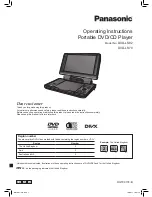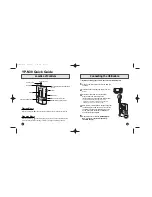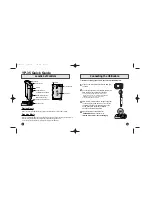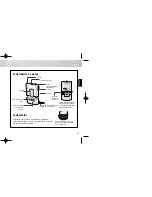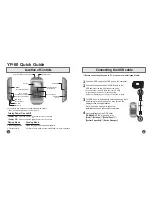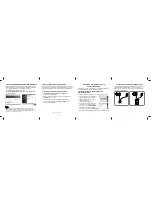
4
2 Warning
2.1.
Prevention of Electrostatic Discharge (ESD) to Electrostatic Sensitive
(ES) Devices
Some semiconductor (solid state) devices can be damaged easily by static electricity. Such components commonly are called
Electrostatic Sensitive (ES) Devices. Examples of typical ES devices are integrated circuits and some field-effect transistor-sand
semiconductor "chip" components. The following techniques should be used to help reduce the incidence of component damage
caused by electrostatic discharge (ESD).
1. Immediately before handling any semiconductor component or semiconductor-equipped assembly, drain off any ESD on your
body by touching a known earth ground. Alternatively, obtain and wear a commercially available discharging ESD wrist strap,
which should be removed for potential shock reasons prior to applying power to the unit under test.
2. After removing an electrical assembly equipped with ES devices, place the assembly on a conductive surface such as
aluminum foil, to prevent electrostatic charge buildup or exposure of the assembly.
3. Use only a grounded-tip soldering iron to solder or unsolder ES devices.
4. Use only an anti-static solder removal device. Some solder removal devices not classified as "anti-static (ESD protected)" can
generate electrical charge sufficient to damage ES devices.
5. Do not use freon-propelled chemicals. These can generate electrical charges sufficient to damage ES devices.
6. Do not remove a replacement ES device from its protective package until immediately before you are ready to install it. (Most
replacement ES devices are packaged with leads electrically shorted together by conductive foam, aluminum foil or
comparable conductive material).
7. Immediately before removing the protective material from the leads of a replacement ES device, touch the protective material
to the chassis or circuit assembly into which the device will be installed.
Caution
Be sure no power is applied to the chassis or circuit, and observe all other safety precautions.
8. Minimize bodily motions when handling unpackaged replacement ES devices. (Otherwise harmless motion such as the
brushing together of your clothes fabric or the lifting of your foot from a carpeted floor can generate static electricity sufficient
to damage an ES device).
Summary of Contents for SL-C700E
Page 8: ...8 3 Specifications...
Page 9: ...9 4 Location of Controls and Components...
Page 10: ...10...
Page 11: ...11 5 Troubleshooting Guide 5 1 Check the problem is reproduced...
Page 12: ...5 2 No power 12...
Page 13: ...13...
Page 14: ...14...
Page 15: ...15...
Page 16: ...16...
Page 17: ...17 5 3 LED does not illuminate 5 4 No buzzer 5 5 Remote control does not operate...
Page 18: ...18 5 6 No Display...
Page 19: ...19 5 7 No CD operation...
Page 20: ...20 5 8 Connector pin configuration...
Page 21: ...21 5 9 Blocks related to each function...
Page 22: ...22 6 Disassembly and Assembly Instructions...
Page 23: ...23 6 1 PCB layout drawing 6 1 1 Inside the main unit...
Page 24: ...24 6 1 2 Front part...
Page 33: ...33 7 Dimensions...
Page 34: ...34 8 Block Diagram...
Page 35: ...35 9 Wiring Connection Diagram...
Page 36: ......
Page 37: ......
Page 38: ......
Page 39: ......
Page 40: ......




















